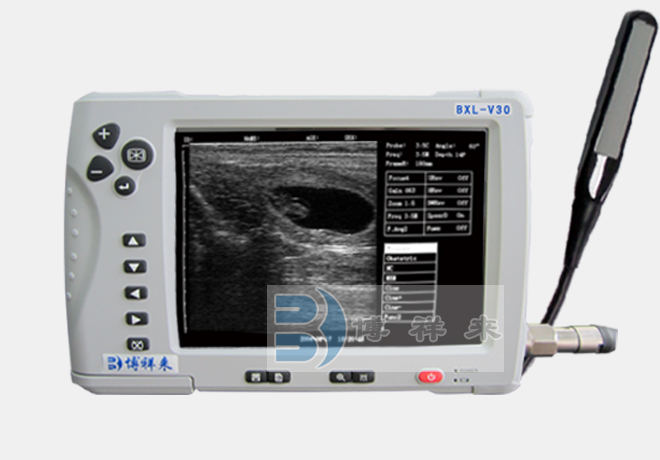Based on the feedback from veterinary ultrasound users and years of development experience, the system requirements for the upper-level software of the digital microcomputer Veterinary ultrasound diagnostic instrument can be seen as a collection of the following use cases:

(1) Sending control commands to the underlying hardware of the veterinary ultrasound diagnostic system: such as imaging mode, image flipping, freezing, etc.
(2) Setting the working parameters of the underlying hardware of the veterinary ultrasound diagnostic system: such as image magnification, filter coefficient, etc.
(3) Setting the upper-level software of the veterinary ultrasound system: such as general settings, time/date settings, screen saver settings, and multi-language settings, etc.
(4) Measuring veterinary ultrasound images: For the selected image, users are allowed to perform various measurements, including basic veterinary ultrasound measurements such as distance, length, circumference, area, angle, and basic M-type measurements. In addition, it also includes measurements of specialized items for different subjects.
(5) Entering information about the tested animal: Recording basic information such as the name, gender, age, height, and weight of the new patient.
(6) Veterinary B-ultrasound image management: allows users to capture and store typical ultrasound images. When users need to display them back, they can call back the stored specific images in the image display area of the interface.
(7) Veterinary B-ultrasound related data management: storage, query, modification and other operations of patient basic data and diagnostic data.
(8) Veterinary B-ultrasound image format conversion function: format conversion between DICOM files and BMP regular files.
(9) Generate and print diagnostic reports: obtain the measurement data of veterinary B-ultrasound images, send them to the report template, and print the diagnostic report when connected to an external printer.
According to the analysis of the veterinary role, the veterinarian needs to be connected with seven use cases including: sending control commands to the underlying ultrasound equipment, setting the device parameters of the underlying hardware, setting the software parameters of the system, measuring veterinary B-ultrasound images, entering new patient information, generating and printing diagnostic reports, and converting veterinary B-ultrasound image formats; the underlying hardware role serves as the underlying support for the upper-level software.








